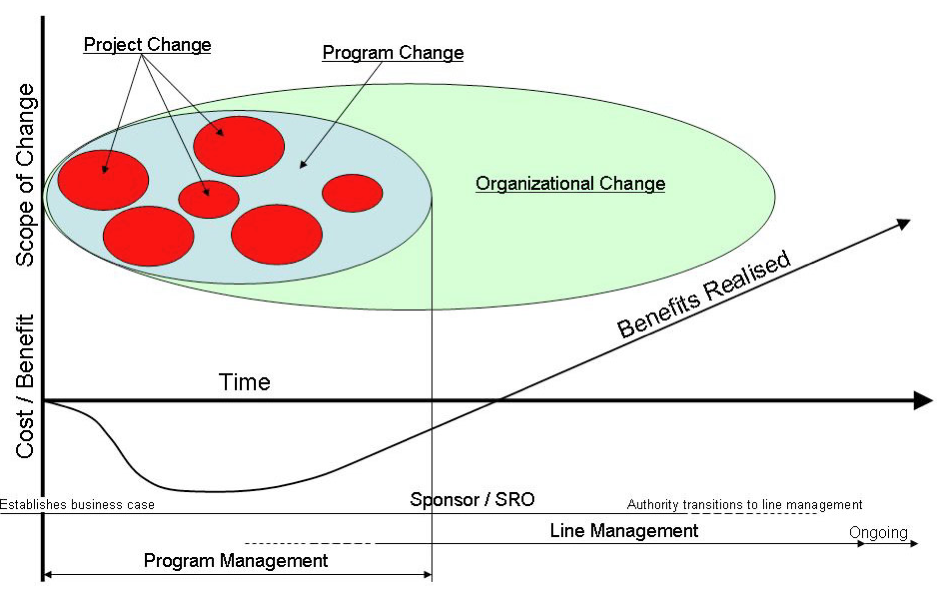Project value management for differing stakeholders
The only purpose of undertaking a project, a program or any other business activity is to create value. If the activity destroys value, you are better off doing nothing.
The key question though is what represents value and who benefits from its creation? Some projects generate significant intangible benefits such as reduced risk, enhanced prestige or, in the case of regulatory requirements, the simple ability to keep trading; others are focused on generating a positive financial return, most generate a combination of financial and intangible returns. These outcomes are rarely constrained by either time or cost, although both can be a factor. So who decides what is valuable?
The simple answer is the realisation of any value proposition is ‘in the eye of the stakeholder’ and effective benefits management requires a clear understanding of what is valuable to the organisation and to its various stakeholders. The answer is not simple and requires balancing competing stakeholder objectives and competing timeframes.
Benefits realisation and value creation are directly linked to organisational governance, the Organisation for Economic Co-operation and Development, in the OECD Principles of Corporate Governance 2004, defines governance as: “involving a set of relationships between a company’s management, its board, its shareholders and other stakeholders. Corporate governance also provides the structure through which the objectives of the company are set, and the means of attaining those objectives and monitoring performance are determined.”
Sir Adrian Cadbury summarised the aim of governance as: “to align as nearly as possible the interests of individuals, organisations and society.”
Within this framework, ‘value’ has a wide range of definitions and because the value proposition is ‘in the eye of the stakeholder’ different stakeholders will value different aspects of the same project. Effective value management requires an understanding of what is valuable to the organisation and its key stakeholders and then managing the overall ‘value chain’ to successfully deliver the best combination of these different values.
Generating sustainable value for an organisation’s stakeholders firstly requires the right projects to be done for the right reasons; and yes, they also need to be done right! Then the organisational change management processes need to ensure the deliverables are used in the right way to create the intended benefits and generate the expected value over a sustained period. Doing the wrong projects right helps no one, neither does doing the right project right but never using the outputs.
The management requirements to achieve these objectives are:
- Value focused strategic plan linked to a sensible portfolio management process.
- A practical ‘project/value delivery capability’.
- An effective organisational change management process.
However, the challenge at all stages of the value chain from the strategic planning phase through to realising the benefits from a specific project or program is knowing who is important at this point in time and what constitutes ‘value’ from their perspective; value may be ‘in the eye of the stakeholder’ but you need to be sure you are listening to the right stakeholders and balancing their competing requirements effectively.
You need to take the time to understand which stakeholders really matter and discovering what is really important to them. From this basis, a realistic and achievable benefits management plan can be crafted and monitored that focus on the real benefits.
Unfortunately far too many ‘benefits realisation plans’ focus on easy-to-measure irrelevancies! For example, a hospital project to move patient records from printed forms to an interactive iPad application may save 500 reams of printing paper a year (or even a month) but this is an irrelevant consequence of the program; the benefits that matter are reduced treatment errors from making real-time information available to all of the medical staff involved in a patients care and as a consequence, better care of the patient leading to better treatment outcomes.
It is only by taking the time to understand what benefits really matter, which in turn requires an understanding of who really matters, that you achieve an effective benefits realisation management regime. The alternative is to simply add another layer of unnecessary bureaucracy onto the organisation. And as the diagram above highlights, this is an organisational challenge, not a project or event a program management challenge.


